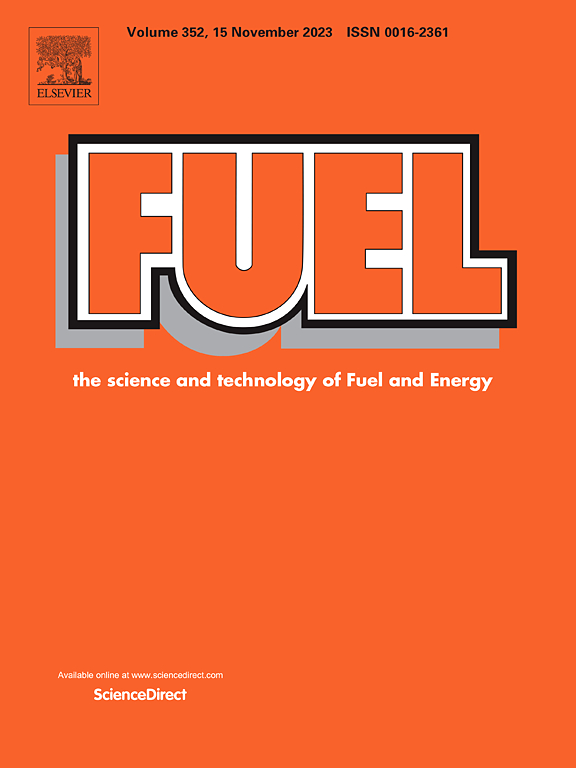Spatial distribution characteristics of <1.5 mm oil shale powder and its influence on the separation of low rank oil shale
IF 6.7
1区 工程技术
Q2 ENERGY & FUELS
引用次数: 0
Abstract
Oil shale is regarded as one of the most promising alternative energy sources for the future, holding significant strategic importance in transforming the energy structure of China. This study employs a autogenous medium air fluidized bed for the beneficiation of low-rank oil shale, with a primary focus on investigating the spatial distribution characteristics of oil shale autogenous medium particles with differentiated particle sizes and densities within the fluidized bed. Moreover, the study aims to determine the optimal particle size and density compositions of the oil shale autogenous medium particles. A systematic analysis was conducted to examine the impact of oil shale autogenous medium particles with varying particle sizes and densities on the density stability of the fluidized bed, and the density distribution pattern of the bed was identified. The separation and mixing behaviors of low-rank oil shale within the fluidized bed were also explored, leading to the identification of material density accumulation layers. Experimental results indicate that the optimal particle size and density compositions for forming the oil shale autogenous medium fluidized bed are d = 0.25–0.125 mm and ρ = 2.2–2.5 g/cm3, respectively. These particles, with the specified size and density, exhibit uniform mixing with other particles, ensuring the highest stability in bed density. When the average particle size () and density () composition of the autogenous medium particles are set at = 0.1 mm and = 2.4 g/cm3, the bed density distribution becomes uniformly stable, which is recognized as the stable density distribution pattern of the bed. The material density accumulation layers in the low-rank oil shale were characterized as follows: the upper layer shows a uniform oil content distribution with a range of 10–10.02 %, indicating a low-density material accumulation layer; the middle layer exhibits substantial fluctuations in oil content, with a distribution range of 3.12–5.96 %, representing the separation layer between high- and low-density materials; and the lower layer shows a uniform oil content distribution in the range of 0.31–0.35 %, corresponding to a high-density material accumulation layer. Furthermore, beneficiation of the low-rank oil shale was performed, yielding a concentrate with an oil content of 10.01 % and a yield of 37.78 %, while the tailings contained an oil content of 0.39 % with a yield of 62.22 %. The probable error (Ep) was 0.08 g/cm3, which realized the efficient dry separation of low rank oil shale.

求助全文
约1分钟内获得全文
求助全文
来源期刊

Fuel
工程技术-工程:化工
CiteScore
12.80
自引率
20.30%
发文量
3506
审稿时长
64 days
期刊介绍:
The exploration of energy sources remains a critical matter of study. For the past nine decades, fuel has consistently held the forefront in primary research efforts within the field of energy science. This area of investigation encompasses a wide range of subjects, with a particular emphasis on emerging concerns like environmental factors and pollution.
 求助内容:
求助内容: 应助结果提醒方式:
应助结果提醒方式:


